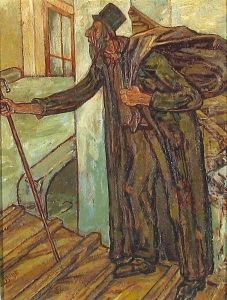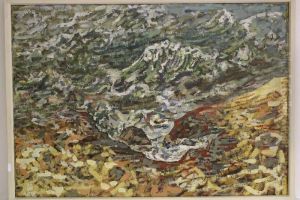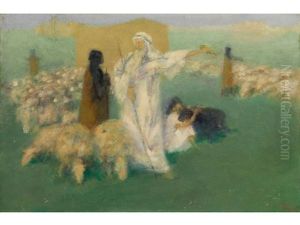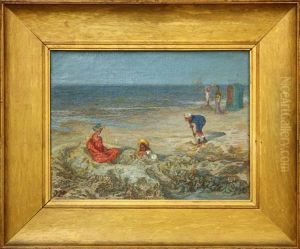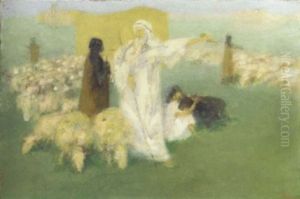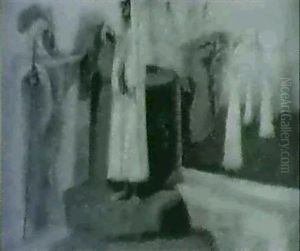Joseph Jacob Isaacson Paintings
Joseph Jacob Isaacson was a Dutch painter, known for his contributions to the art world in the late 19th and early 20th centuries. Born in Groningen, Netherlands, in 1859, Isaacson's artistic journey began in his homeland but would later take him across Europe, enriching his skills and perspectives. He is often celebrated for his ability to blend traditional Dutch painting techniques with the influences of French Impressionism, a movement that was gaining prominence during his formative years as an artist.
Isaacson's early life was marked by a profound interest in art, leading him to pursue formal education in the field. He studied at the Royal Academy of Art in The Hague, where he honed his skills in painting and drawing. His thirst for knowledge and artistic development did not stop there; Isaacson traveled extensively through Europe, particularly spending significant time in Paris. It was in the French capital where he was exposed to the works of the Impressionists, an experience that had a lasting impact on his approach to painting. The emphasis on light and color, as well as the spontaneous, often plein-air method of the Impressionists, resonated with Isaacson, influencing his subsequent works.
Throughout his career, Isaacson exhibited a keen interest in capturing the essence of his subjects, whether they were landscapes, portraits, or scenes of daily life. His works are characterized by a delicate balance between realism and the more fluid, light-infused style of Impressionism. This unique blend allowed him to carve out a distinct niche in the art world of his time. Isaacson's art was well-received, earning him recognition and accolades both in the Netherlands and internationally. He participated in numerous exhibitions, further establishing his reputation as a skilled painter.
In addition to his artistic achievements, Isaacson also played a role in the intellectual and cultural circles of his era. He was known to be a part of a network of artists and thinkers, contributing to discussions and debates about the direction of modern art. Despite his engagement with the broader art community, Isaacson remained deeply connected to his Dutch roots, often reflecting the beauty and serenity of the Dutch landscape in his works.
Joseph Jacob Isaacson's legacy is that of an artist who skillfully bridged the gap between traditional Dutch art and the emerging trends of his time. His ability to absorb and reinterpret the Impressionist style, while maintaining a connection to the subjects and scenes of his homeland, made him a unique figure in the art world. Isaacson passed away in 1934, leaving behind a body of work that continues to be appreciated for its beauty and historical significance.
